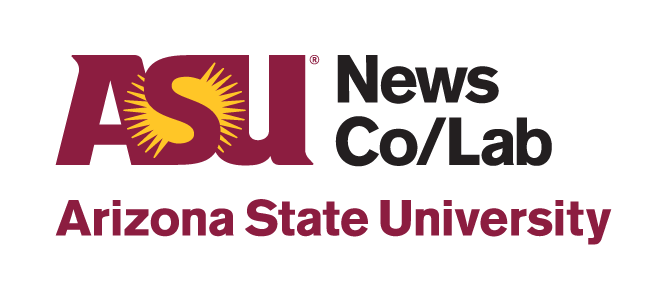Can “the literacies” get it together?

The disciplines must come together to distill the key fundamentals of finding, understanding, acting on and creating news and information in the digital age.
This blog post is an updated excerpt of News Co/Lab co-founder Eric Newton’s report to the Knight Commission on Trust, Media and Democracy. Newton helped the commission develop its recommendations on literacy, including that all Americans by age 18 be “digitally literate citizens.” Read the first and second posts in the series.
Literacy can take a while. An estimated 86 percent of the world’s humans (aged 15 and older) are literate. But books have been around for centuries. Despite its obvious benefits, even after all this time, the whole world can’t read.
A society does not need to be the richest or strongest to be literate. To be literate, a society must value literacy and organize to achieve it. Does the United States value literacy? Our national rate is no better than the world average.
We haven’t mastered the old literacy, but ready or not, here come the new ones. Just 25 years ago, the rise of the World Wide Web spawned the most profound change in human communication since the invention of the book. Our education systems have not yet reorganized to teach digital-age literacies. If you want to go to college, and you take the SAT test, chances are you do it on paper, just as they did a century ago, and the questions have nothing to do with navigating cyberspace.
But there is some good news. All literacies are related, and that means if educators unite they might (far more quickly) find universal “new literacy” skills and concepts that could be taught at all grade levels, sprinkled into courses on any topic.
Conceptually, literacy can be described as a family of Russian nesting dolls.
The outermost, largest doll would be basic literacy — the ability to understand anything represented by any kind of symbol. Directly inside would be information literacy, which lays claim to all forms of information, followed by digital literacy, the fast-rising newcomer, as there is now more digital content than any other kind. Inside that comes media literacy, followed by the news literacy one needs to comprehend non-fiction, current affairs media. In the middle are topic-specific literacies like civic and health literacy, payoffs to those savvy enough to find them.
The problem with the nesting doll concept: Only some educators get to teach the big dolls. So arguments are made that each type of literacy deserves to be its own large umbrella. Media literacy, for instance, includes cultural context, which could be considered pretty much everything. But if the goal is self-government, then wouldn’t civic literacy be the most important?
In the world of rule-making, in fact, civics literacy is on the rise. Some U.S. states have moved to increase high school civic literacy requirements. Others are looking at legislation that combines aspects of civic, digital, media and news literacy.
In education, though, each field has its own values; within each field are those who want the big tent.
The scholarly debate surrounding definitions and benefits of different literacies matters, of course. But we urgently need to find practical ways to help students (and everyone) tell the difference between fact and fiction.
Traditional literacy can’t be ignored. “New media literacies,” write a team led by scholar Henry Jenkins, “include the traditional literacy that evolved with print culture as well as the newer forms of literacy within mass media and digital media. Much writing about twenty-first century literacies seems to assume that communicating through visual, digital, or audiovisual media will displace reading and writing. We fundamentally disagree. Before students can engage with the new participatory culture, they must be able to read and write.”
Information and media literacy have emerged as two of the largest “new literacies.” Though rooted in different disciplines, scholars Dr. Alice Y.L. Lee and Dr. Clement Y.K. So suggest “the two fields could find common ground by cooperating” because they have similar goals of “cultivating people’s ability to access, understand, use and create media messages or information.” But because scholars in different fields layer their own theories, methods and values onto them, cooperation is not the rule. Even within the media literacy community there is debate over its primary purpose. Is it “protectionist,” to help people identify and deal with false and harmful media messages? Or is its purpose “empowerment,” to support media creation? The first path leads to proposals to “inoculate” all young people before they get online; the second, to give “voice” to students as a way of engaging them. (Another question might be: Why can’t we do both?)
Further, critics of news literacy fret that it glorifies journalism, rather than teaching critical thinking that would eventually, hopefully, help correct journalism’s flaws. News literacy educators counter that too many media educators know so little about quality journalism they can’t teach what it is or how to find it, only how to criticize it. Still others say the first goal should not be to make people more news-literate but to “make journalism more public literate.” Ignoring that, top programs are showing they can increase not just “news media literacy” but also knowledge of current events and motivation to consume news.
Seeing the literacies as related is a step forward. “We can consider different types of literacy to be part of the same family,” writes scholar Renee Hobbs. “Information literacy has typically been associated with research skills,” she notes; media literacy, ”with critical analysis of news, advertising and mass media entertainment”; health media literacy, with “media’s impact on making positive (health) choices”; and digital literacy, “with the ability to use computers, social media and the Internet.” The task at hand, she says, and what she hopes “digital and media literacy” does, is to synthesize the “competencies” present in all new literacies.
Internationally, UNESCO works to combine “the large number of related existing literacies that can be identified in the digital age,” including news literacy, television literacy, computer literacy, Internet literacy, digital literacy, as well as other emerging ones like texting literacy and social media literacy. The UNESCO model also covers freedom of expression in democracies. But that bundling approach does not mean everything is taught with equal weight. There can be great variety in how the literacies are taught, with different approaches in different countries and even with different individuals.
This complexity argues for an even better grasp on the basics, and a sense of when and how to layer on more advanced concepts and skills as a person moves through life. An American child, for example, might study English every year until college. We don’t yet require that cumulative fluency in the new literacies. And basic literacy skills are practiced across subject matters, an approach we argue would also be beneficial for the advancement of news literacies.
Studies find that each of the new literacies has impact. But the larger issue is whether separate efforts in the different literacies are having collective impact. The new digital age of human communication has increased the challenge exponentially. Even if every current program in information, digital, media, news, civic and health literacy succeeds, that is not enough. A fundamental premise of the News Co/Lab is that we should encourage and support the growth of every good program that exists, but find bigger, more collaborative approaches.
Perfection, it’s said, is the enemy of good. This applies to the new literacies. Can each discipline — library science, social science, journalism, etc. — teach all the new literacies solely from its own viewpoint? By definition, no single discipline knows enough to teach everything. If, on the other hand, the disciplines work together, each from its own expertise, good things can happen.
Together, the disciplines can distill the key fundamentals of finding, understanding, acting on and creating news and information in the digital age. We really have to get it together. We don’t have hundreds of years to get to near the finish line, not this time.
In the next post: Eric Newton explores ways to move ahead.

Eric Newton is a global leader in the digital transformation of news and a key figure in the creation of news literacy. As the Innovation Chief, he drives change and experimentation at Cronkite News, the news division for Arizona PBS.
